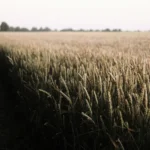A report published by the United Nations International Panel on Climate Change predicts a decline of between 2% to 6% in the yield of global crops every ten years. Millions of people are at risk from extreme climate change such as droughts, floods, heat, superstorms, and other signs of a planet that is becoming warmer day by day.
The collapse of the food system is considered one of the biggest threats of climate change. The past years have seen damage or destruction of millions of acres of crops.
Europe’s heatwave burned vineyards and cornfields, and the American Midwest farmers lost billions of dollars when heavy rains prevented them from planting soy and corn. These are some of the most common effects of climate change and food supply.
Rising Temperatures
Certain crops may benefit from global warming, for instance, rice and potatoes. However, the rising heat could make it almost impossible for farmers to plant and harvest traditional crops. The stressful heat will change the development and growth of the plants, resulting in a drop in their yield. These heat waves are predicted to become more frequent. New plant weeds, pests, and fungi will increase in number and survive for more extended periods, bringing with them new diseases leading to the destruction of crops that wouldn’t have had time to build a defense against them.
Carbon Dioxide Emissions
While some crops yield more with high levels of carbon dioxide, others decline in their yield, and the high level of CO2 reduces the crop’s nutritional value, which becomes a potential threat to human health.
Droughts
In some areas, the rising temperatures in the summers in some areas cause the soil to become hard and dry. This harms the crops and decreases their production. Farmers face a challenging task in overcoming this problem. More irrigation could help, but the water supply also gets reduced, and there isn’t enough water to irrigate the land and crops.
Threat to Livestock
The heatwave will also have an impact on the livestock. High heat increases the animal’s vulnerability to diseases, reduces their fertility, and reduces milk production.
Droughts around the world will reduce the quality of forage and its amount. The grazing pastures and the feed supply will be under threat too.
Parasites and diseases will affect the livestock. The change in veterinary practices that will be adopted to maintain the health of the farm animals increases the risk of pesticides entering the food chain; hence, the safety of livestock consumption could be questioned.
Threat to Marine Life
The world’s oceans are becoming warmer and more acidic due to the rise in atmospheric carbon dioxide. The change in water temperature will affect the migration and reproduction of fish and other species.
It leads to disease outbreaks in corals and eelgrass. Salmon species are being infected with diseases due to the winter warming in the Arctic Ocean. Increased acidity is damaging and destroying the sensitive ecosystem on which marine life depends for survival.
Climate change will affect the entire world. It will lead to disruptions in the availability of food and will affect the quality of food as well. The effects of climate change on food supply will be felt by one and all – consumers and producers alike.
As the world’s population increases, there will be more mouths to feed. Unfortunately, food is expected to get scarce and, as a result, more expensive.
Poor and undeveloped countries could face political unrest and food riots. If little or no action is taken to prevent the upcoming impediment, a huge number of people will face significant food problems. Urgent steps need to be taken to stop these negative impacts of climate change.




